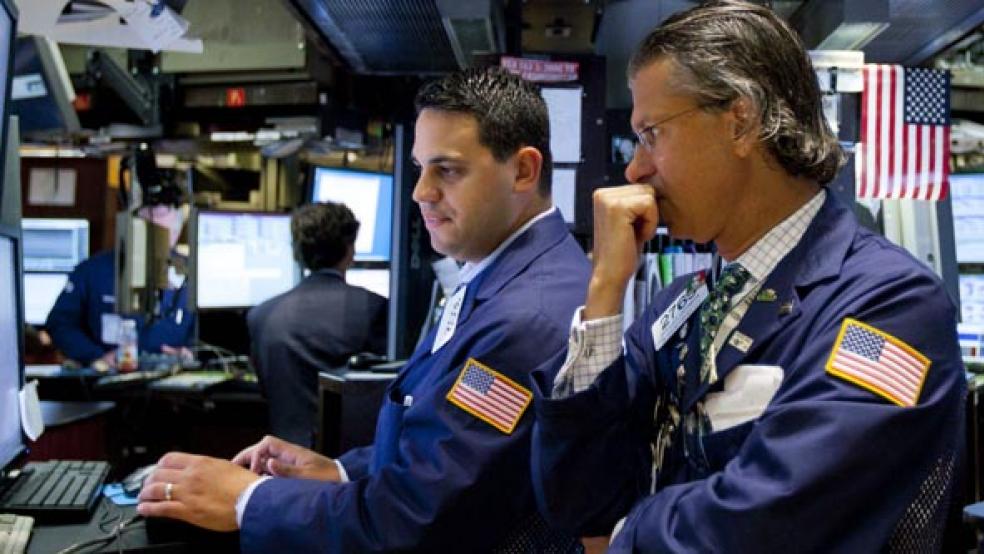The wrenching selloff in U.S. high-growth technology and biotech shares could leave investors braced for more than a minor pullback when earnings pick up speed next week. First-quarter earnings estimates have fallen sharply as many companies have blamed the brutal winter for weak outlooks. With high-valuation stocks under pressure, earnings could be subjected to even more investor scrutiny than usual.
"There's skepticism among investors about the outlook, and we're getting into the first-quarter earnings season, so you're going to see some positioning," said Brian Jacobsen, chief portfolio strategist at Wells Fargo Funds Management in Menomonee Falls, Wisconsin.
Related: IPO Buyers Beware - Sizzling Market Offerings Cooling
Profit growth for Standard & Poor's 500 companies now is expected to have increased just 0.9 percent in the first quarter from a year ago, down from a Jan. 1 forecast for 6.5 percent growth, Thomson Reuters data showed.
In the coming week, 54 S&P 500 companies are scheduled to report first-quarter earnings. In comparison, 29 companies in the S&P 500 had reported results through Friday. Earnings are due next week from such high-profile names as General Electric, Johnson & Johnson, Goldman Sachs, Google and IBM.
Related: How Facebook and Google Want to Mess With Your Reality
Wall Street will get more readings on the U.S. economy in the coming week, with retail sales on Monday, the Consumer Price Index on Tuesday, U.S. housing starts and industrial output on Wednesday and the Federal Reserve Bank of Philadelphia's business activity index on Thursday. The latest weekly initial jobless claims will also be released on Thursday.
This flurry of numbers will come during a four-day week. The U.S. stock market will be closed for Good Friday. Volume is also likely to be lighter than usual with some participants away for the observance of Passover, which will begin at sundown on Monday.
Blue Chips Back in Style
A move into blue chips is one trend emerging after the market's slide, which pushed the Nasdaq on Friday to a close below 4,000 for the first time since Feb. 3. The Nasdaq Composite Index is down 4.7 percent for the month so far, while the Dow Jones industrial average is down 2.6 percent and the S&P 500 is down 3 percent.
"You've seen small caps dominate," Jacobsen said, referring to some of Wall Street's one-time darlings. "We're going to begin to see large caps dominate now as people shift more from these high-beta plays to quality." Despite the selloff, data so far showed that investors are still pouring money into stocks.
Related: Here's What Janet Yellen Really Said About Rate Hikes
Investors in U.S.-based funds put $8.9 billion into stock funds in the week ended April 9, the biggest net inflows in four weeks. At the same time, funds that mostly hold U.S. Treasuries reported outflows for the first time in four weeks, according to data from Thomson Reuters' Lipper service on Thursday.
Yet biotechs have been slammed. The Nasdaq biotechnology index has fallen for the seventh straight week. The biotech index is down about 21 percent from its record closing high on Feb. 25. The last time it fell for seven straight weeks was in the summer of 1998.
The price-to-earnings ratio on the Nasdaq biotech index is 34.4. The forward P/E ratio for the S&P 500 is 14.9, Thomson Reuters data showed.
Data on sector exchange-traded funds also showed a big move out of tech-related areas, with science and tech ETFs registering outflows in the week ended April 9 after at least five straight weeks of inflows. Health care and biotech ETFs also showed outflows for the latest week, according to Lipper data.
High-growth companies, mostly in the tech and biotech sectors, led 2013's rally, leaving them with some of the market's highest valuations. "Valuations are going to start becoming relevant again, at least for a while," said Uri Landesman, president of Platinum Partners in New York.
Tuning in to the Fed
Part of what's behind the big momentum selloff may be nervousness surrounding the Federal Reserve's December decision to scale back its economic stimulus, or quantitative easing.
That's why all eyes will be on Fed Chair Janet Yellen when she speaks on Wednesday to the Economic Club of New York.
"We've had basically five years of a market that's been nannied by the Federal Reserve," which has driven up market valuations, said Quincy Krosby, market strategist at Prudential Financial, based in Newark, New Jersey. "Now as we get closer and closer to the end of QE, I think traders and hedge funds are being very careful and selective."




